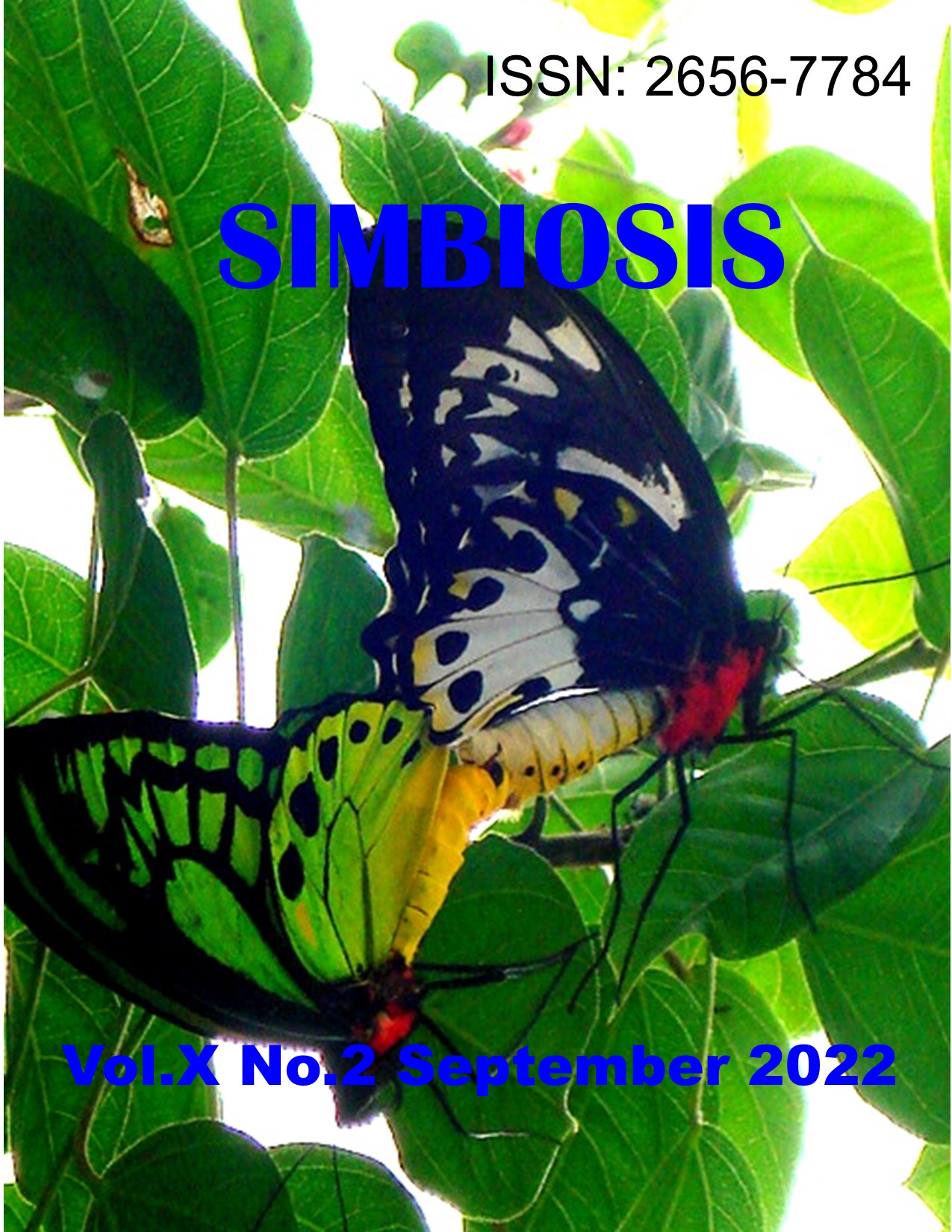INHIBITION OF WHITE GALANGAL EXSTRAC (Alpinia galanga L.) ON THE GROWTH OF Escherichia coli O157:H7 and Staphylococcus epidermidis.
Abstract
Escherichia coli O157:H7 and Staphylocccus epidermidis are bacteria that can cause disease in humans. Alternative control efforts are very important because the use of antibiotics can cause adverse side effects. This study aims to obtain extracts of white galangal (Alpinia galanga L.) in inhibiting the growth of E. coli O157:H7 and S. epidermidis. In this test, white galangal extract was macerated with three solvents at different polarity levels (96% ethanol, n-hexane and ethyl acetate). The ability of white galangal extract in inhibiting bacteria was tested using the Kirby Bauer method (paper disc). The concentration of galangal extract tested was 0%; 5% ; 10% ; 15%; 20% (w/v), control (ciprofloxacin) and MIC (Minimum Inhibition Concentration). To determine the toxicity of the extract, the LC50 test was carried out. Meanwhile, to determine the class of compounds contained in the galangal extract, phytochemical tests were carried out using the phytochemical screening method. The results showed that white galangal extract with 96% ethanol as solvent and n-hexane was able to inhibit the test bacteria. Inhibition against E. coli O157:H7 was most effective in n-hexane solvent with an extract concentration of 20% (inhibition zone diameter 20.2 mm). while for S.epidermidis was n-hexane solvent with a concentration of 20% (inhibition zone diameter 23.5 mm). LC50 against E. coli O157:H7 with 96% ethanol and n-hexane as solvents 11.2% and 10.4%, respectively. Meanwhile, the LC50 of S. epidermidis with 96% ethanol and n-hexane solvents were 9.9% and 9.3%, respectively. Qualitatively, white galangal plant extract contains a class of flavonoid compounds, saponins, terpenoids, and tannins.
Downloads

This work is licensed under a Creative Commons Attribution 4.0 International License.










